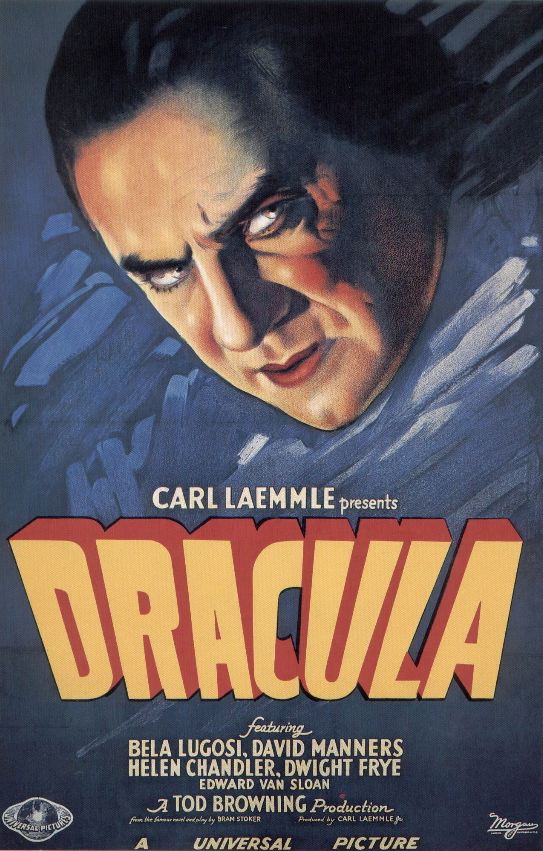
I saw the 1931 version of Dracula so many times as a kid, and listened so
often to a tape of its soundtrack I made off the TV, that at a certain
point I couldn’t see or hear it anymore. Even watching it today I
sometimes find myself speaking the lines before they’re delivered, with
the exact (and always eccentric) vocal inflections of the actors.
I stopped watching it in my late teens, a bit embarrassed by its
clunkiness and lack of sophistication — so it was something of a
revelation to see it again recently in the restored version now out on
DVD and find myself wondrously entertained.
It is a truly demented film, in a way none of the other classic Universal horror films are — and the dementia must be credited largely to Tod Browning, because it echoes the perversity of so many of his silents.
Everyone in the film looks drugged — moves like a sleepwalker or someone in a
woozy erotic reverie. The slow pace can perhaps be attributed in part
to the recent transition to sound — to the need for actors to avoid
stepping on each other’s lines and to the silent-era habit of lingering
on movement for character or narrative exposition that could now be
supplied by the dialogue. But a bigger part I think is a stylistic
choice by Browning — his way of creating an otherworldy and yet
insistently sensual mood.
It’s not quite campy, as James Whale’s style can be — there’s no real wit
to it, no winking at the audience to let them in on the joke. We simply
seem to be watching a film in some unfamiliar Kabuki-like performance
tradition, which demands from its performers a greater degree of
deliberation and a slower pace than we’re used to. The effect is
unsettling but adds to the uncanny atmosphere.
The restored version gives one a chance to appreciate how beautifully the
film is shot — with exquisite lighting and infrequent camera moves
that are nevertheless always effective, either in enlivening an
otherwise static interior scene or in giving the spectator a sense of
being drawn in to a forbidden precinct. The film is so much more
stylish visually than most of Browning’s work that I guess one must
credit the speculation that cameraman Karl Freund was a kind of
co-director on the film — or at least that Browning gave him total
license in creating the look of it.
It has many lapses of continuity, a few of which are really jarring — evidence,
as has been suggested, that someone took the shears to Browning’s
original cut. But when the film slows down in the second half, with its
maddening repetition of expository material in the dialogue, you find
yourself wishing for the shears yourself. The script is simply very
clumsy, and I’m convinced the cutting was done to eliminate unnecessary
dialogue rather than to address any directorial lapses by Browning, who
after all was charged with shooting the script approved by the studio.
The film is never scary, exactly — but it’s creepy, spooky, strange, in
its own unique way. It has a dreamlike quality that allows its
subversive themes to gain sway over the spectator’s unconscious
experience of the film.
